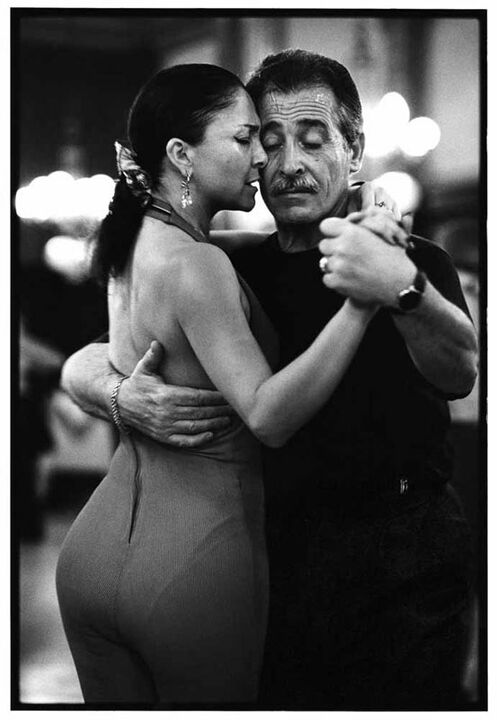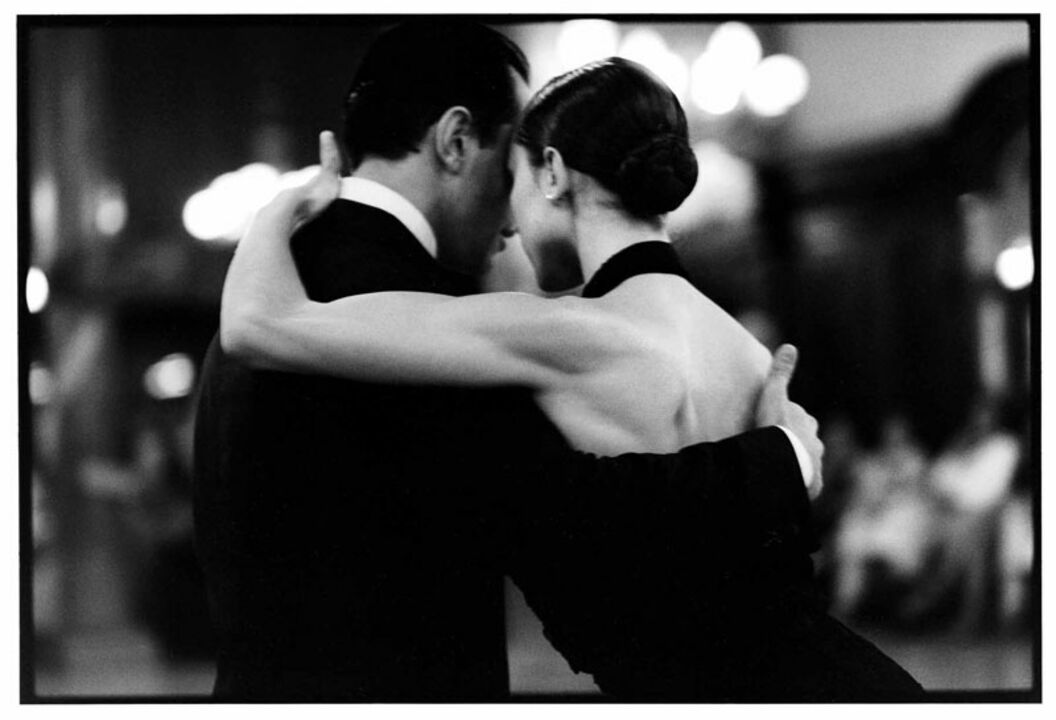Adriana Groisman, New York, USA
Tango
Tango, Never Before Midnight, is a work which records the world of the milongas –traditional Argentinean tango balls– and their patrons, the milongueros.
The milongueros constitute a unique sub-culture which has its own highly encoded rules of behavior. These codes are a reflection of a certain street-smart, bitter, melancholic yet passionate view of the world, with its particular ethical and esthetic values. They are the result of tango’s history as the expression of marginalized and displaced people that was subsequently co-opted by the upper classes and glamorized by Europeans, but never lost its presence in the poor neighborhoods of Buenos Aires. The quintessential music of urban Argentina, tango, has become forever entangled in the Argentineans’ own sense of national identity.
After a couple of decades in which tango had lost its currency among young people, it is now being massively re-discovered by younger middle-class Argentineans as well as by the international entertainment industry. As a result, the traditional characteristics of the world of the milongueros are being altered. This project attempts to record the subtle elements that define the psychological and social environment of the traditional milonga before it is changed forever by the aging of the old time milongueros and the advent of new values.
Each night at the milonga is a dramatic cycle in itself, an erotically charged arena where issues of power and gender are played out. Fleeting relationships, alliances, rivalries, jealousies and games of seduction occur, leading to the encounters on the dance floor. These negotiations are carried out through furtive glances and minute gestures, parts of a ritual that can go completely unnoticed by outsiders. Milongueros tend to speak very little; even if they have been dancing with each other for years they never ask each other’s last names, addresses or professions. This is one of the unspoken rules of the “real” milongueros. At the milonga, class, age and physical appearance recede. The dancing is what counts, the connection between body and body, the feeling for the music. Another implicit rule is that the invitation to dance is never verbal. Rather, this is done through a complex series of interlocking gazes and body attitudes. Part of what I aim at in this project is to capture this loaded yet delicate body language.
For the last fifteen years I have been learning about tango, attending milongas, slowly inching my way into the scene and familiarizing myself with their unspoken codes. During this time I did some photo assignments on the subject of tango for color magazines. But it was only about seven years ago that I started this project, which I believe has a unique personal vision of the world of milongueros. I turned to black and white, using only ambient light, and never carried a flash or lighting equipment to avoid their disruptive effect. I developed a method of working that relied on the implicit consensus between photographer and subject and that happened in the same cunning, silent way as all other negotiations among milongueros. I also audio-taped hours of conversations with some key milongueros. Mostly recorded at the milongas well after 4:00 AM, they are an intrinsic part of this project.










